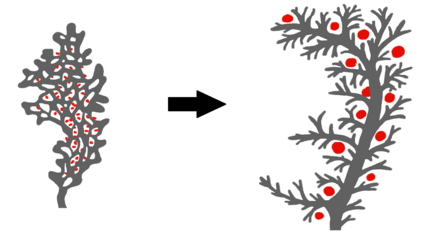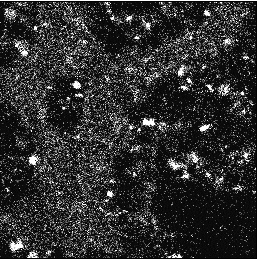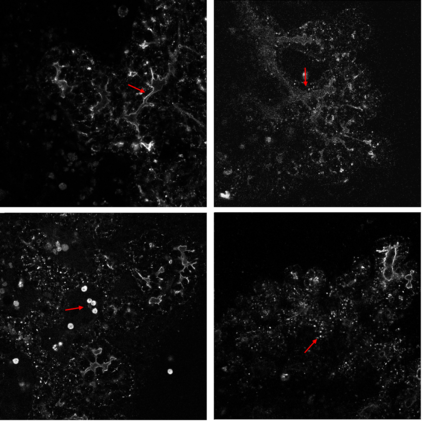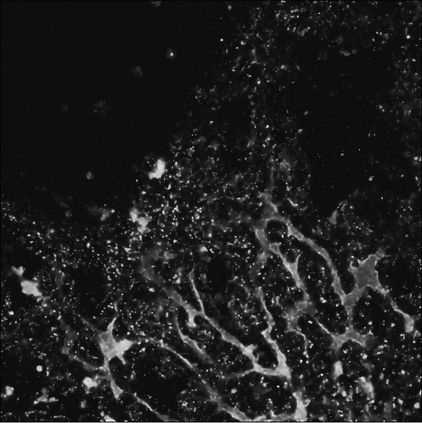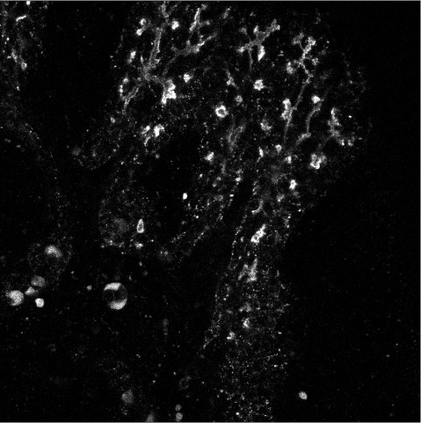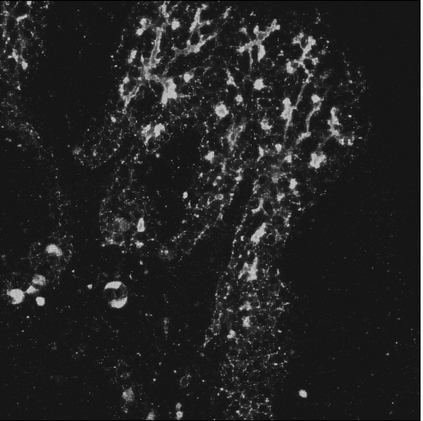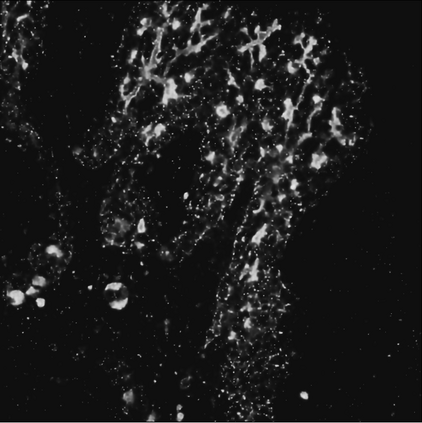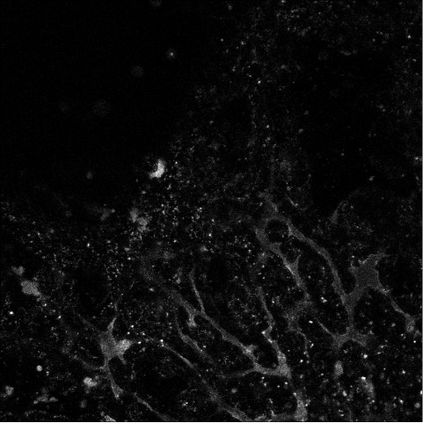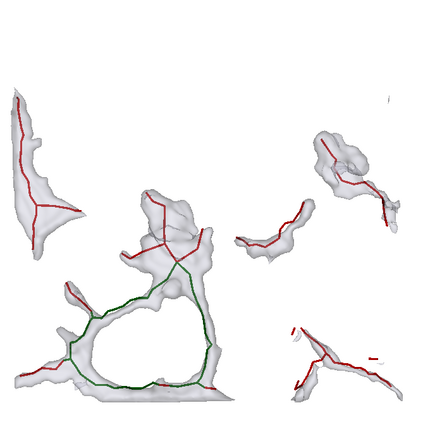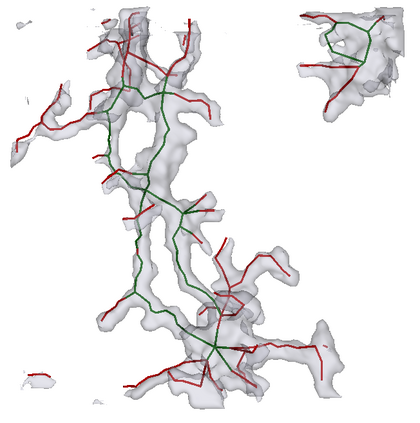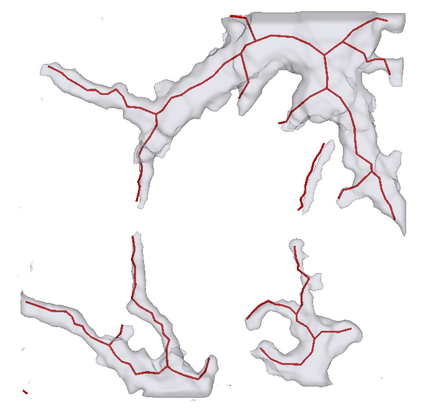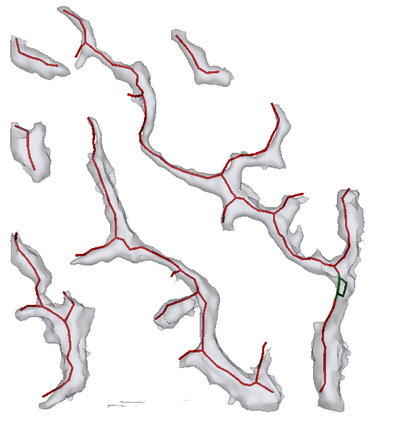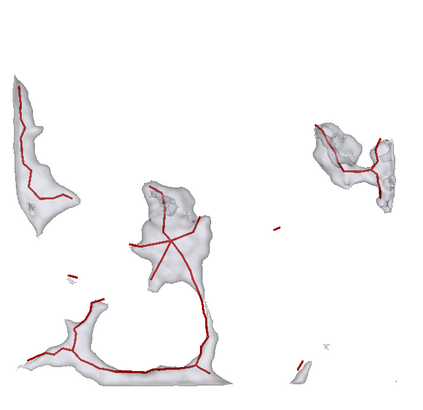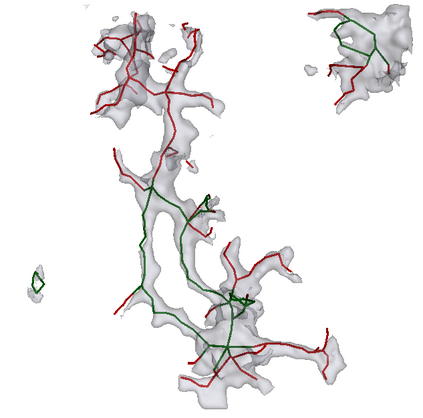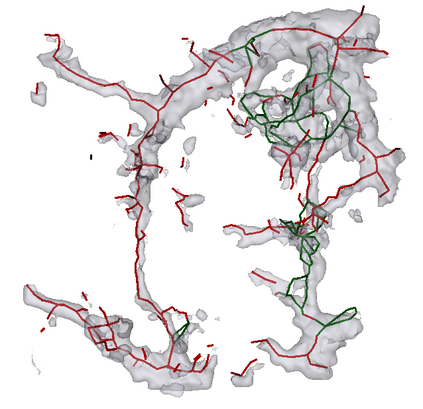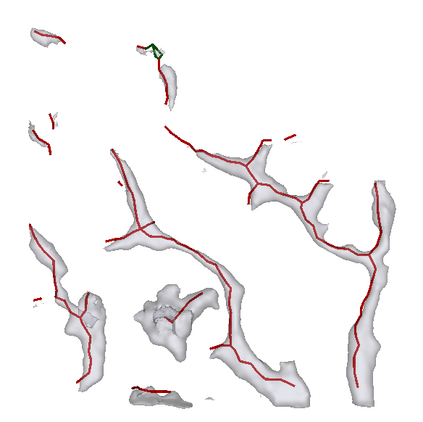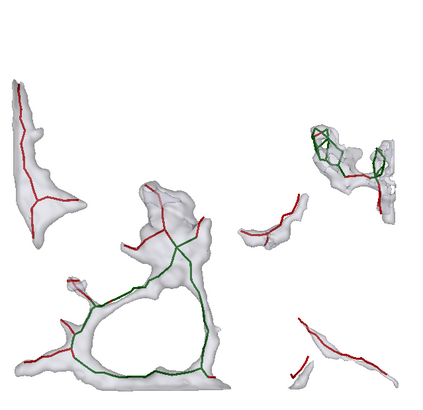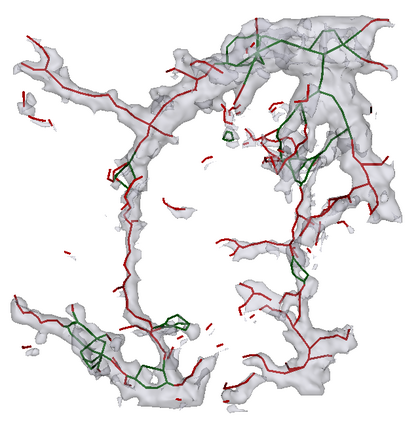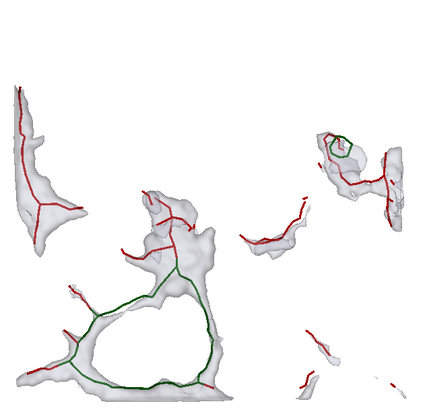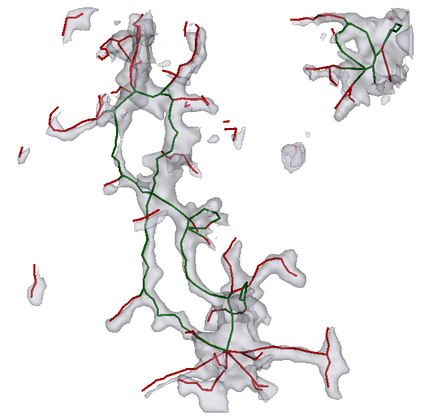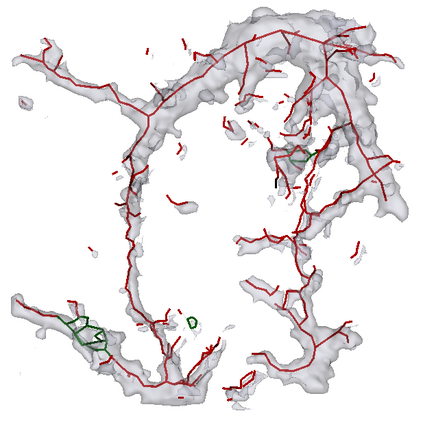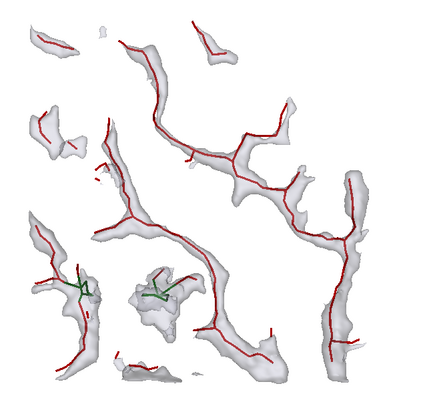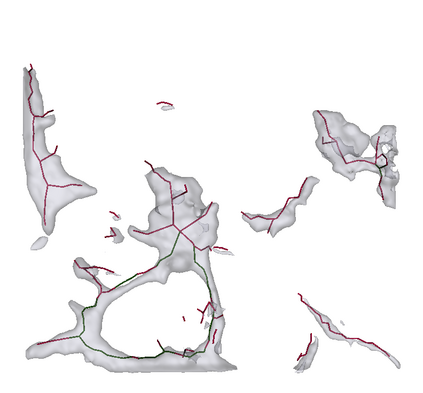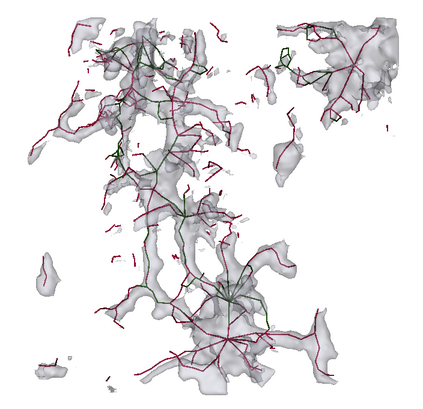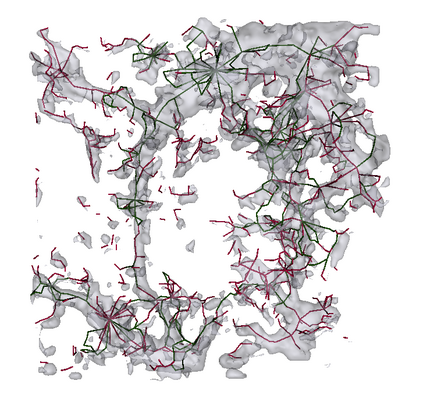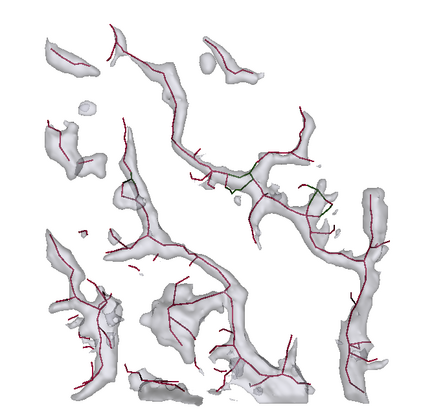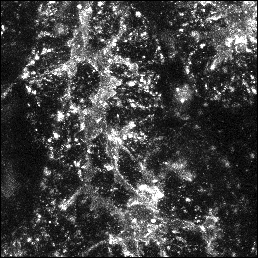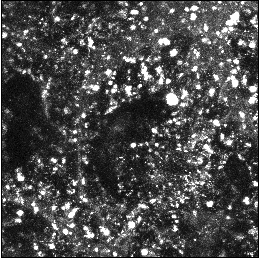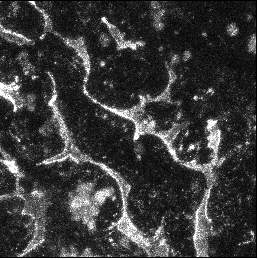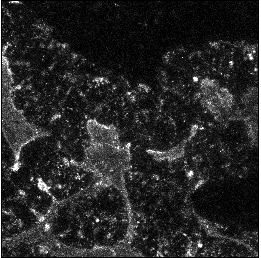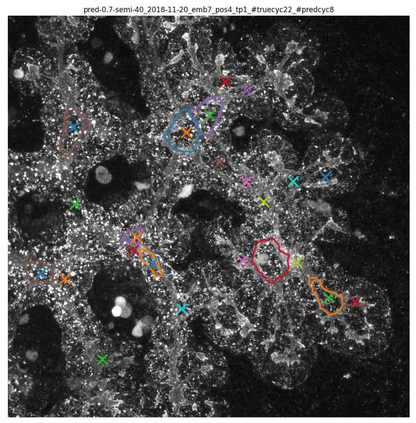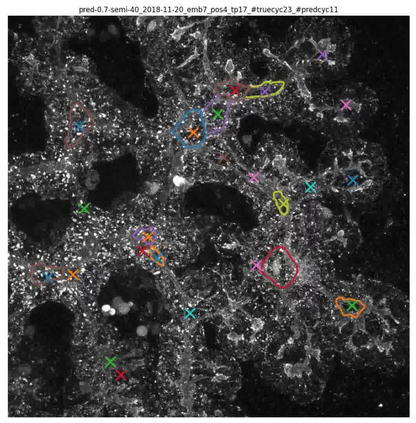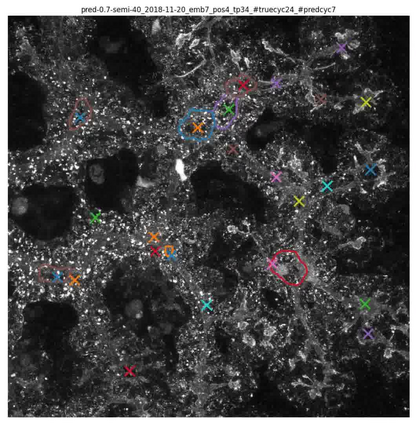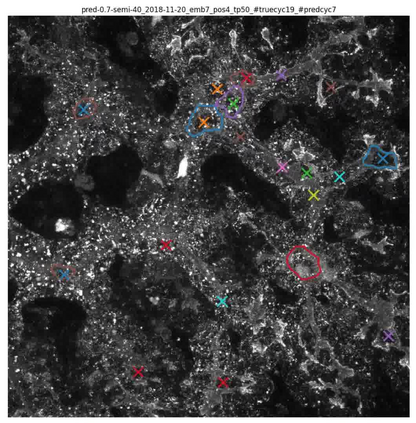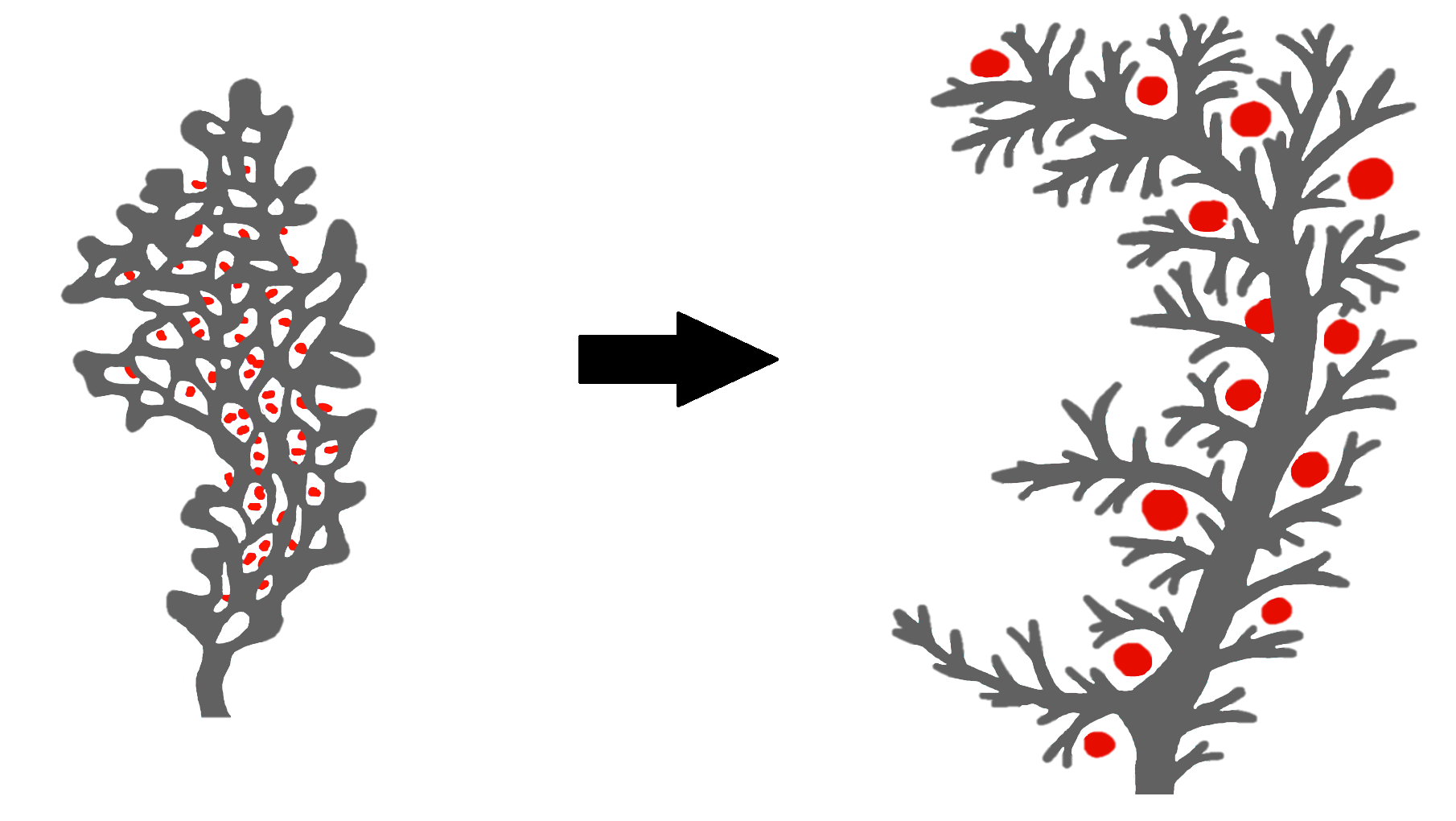Motivated by the challenging segmentation task of pancreatic tubular networks, this paper tackles two commonly encountered problems in biomedical imaging: Topological consistency of the segmentation, and expensive or difficult annotation. Our contributions are the following: a) We propose a topological score which measures both topological and geometric consistency between the predicted and ground truth segmentations, applied to model selection and validation. b) We provide a full deep-learning methodology for this difficult noisy task on time-series image data. In our method, we first use a semisupervised U-net architecture, applicable to generic segmentation tasks, which jointly trains an autoencoder and a segmentation network. We then use tracking of loops over time to further improve the predicted topology. This semi-supervised approach allows us to utilize unannotated data to learn feature representations that generalize to test data with high variability, in spite of our annotated training data having very limited variation. Our contributions are validated on a challenging segmentation task, locating tubular structures in the fetal pancreas from noisy live imaging confocal microscopy. We show that our semi-supervised model outperforms not only fully supervised and pre-trained models but also an approach which takes topological consistency into account during training. Further, our approach achieves a mean loop score of 0.808 for detecting loops in the fetal pancreas, compared to a U-net trained with clDice with mean loop score 0.762.
翻译:本文在泛红管状网络具有挑战性的分解任务推动下,解决了生物医学成像中常见的两个常见问题:分解的地形一致性,以及昂贵或困难的批注。我们的贡献如下:(a) 我们提出一个表层评分,用以衡量预测和地面真相分解的地形和几何一致性,适用于模式选择和验证;(b) 我们为时间序列图像数据这一棘手的吵闹任务提供了完全的深层次学习方法。在我们的方法中,我们首先使用一个半监督的Unet结构,适用于通用分解任务,即联合培训一个自动解析器和一个分解网络。我们随后使用循环跟踪,以进一步改进预测的表层学。这种半监督办法使我们能够利用未经附加说明的数据来学习特征表,这些特征表一般地测试数据,尽管我们的培训数据变化非常有限。我们的贡献在具有挑战性的分解任务中得到了验证,将块状结构结构结构结构结构结构结构结构结构定位于不固定的现场成型成型成型的缩略图式微缩图。我们用一个经过严格化的分解的轨道模型来进行彻底的分解,在对准的分解模型中,我们用一个经过彻底的分解的分解的分解的分解模型中也在完全的分解模型中,在完全的分解模型中,在经过了我们进行着的分解的分解的分解的分解的分解。

